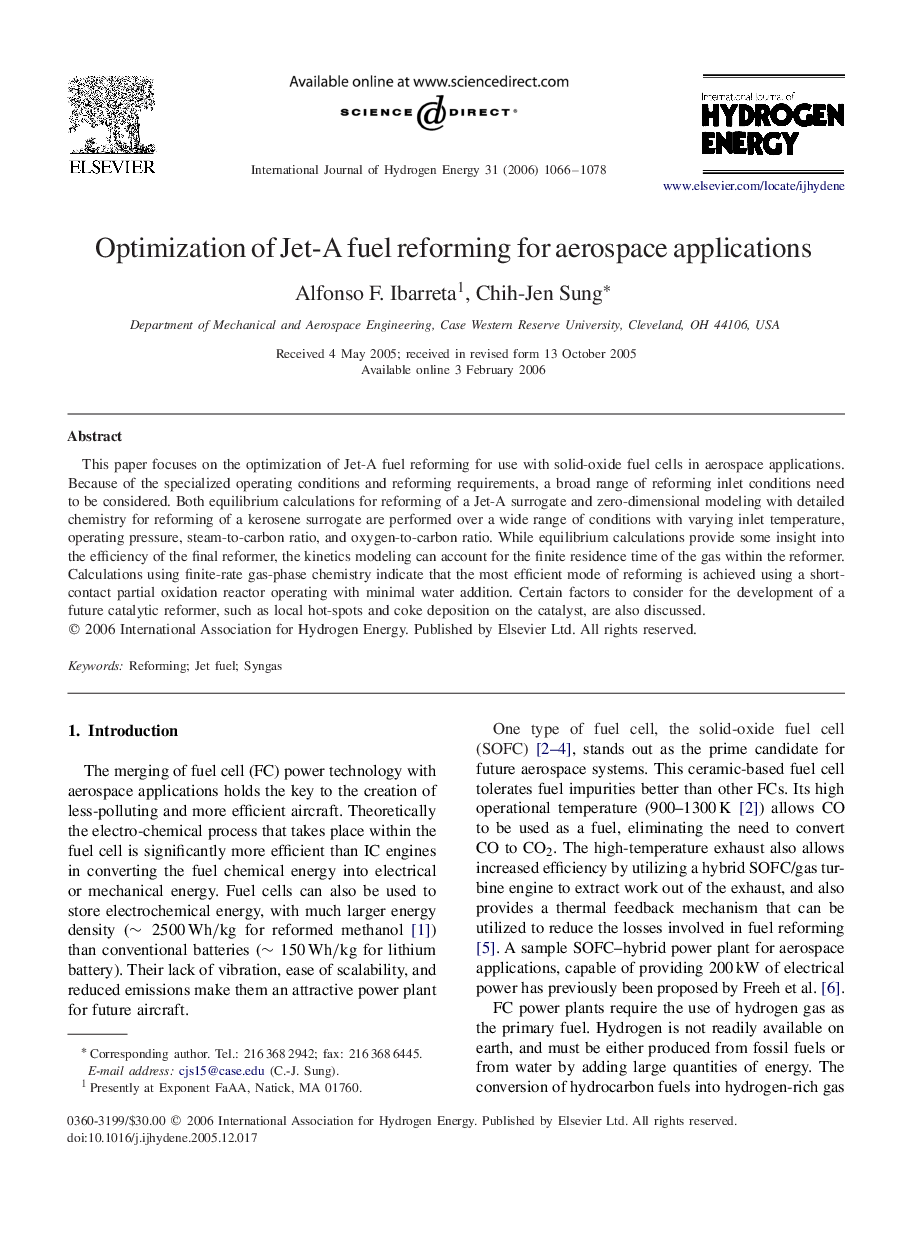| Article ID | Journal | Published Year | Pages | File Type |
|---|---|---|---|---|
| 1275411 | International Journal of Hydrogen Energy | 2006 | 13 Pages |
This paper focuses on the optimization of Jet-A fuel reforming for use with solid-oxide fuel cells in aerospace applications. Because of the specialized operating conditions and reforming requirements, a broad range of reforming inlet conditions need to be considered. Both equilibrium calculations for reforming of a Jet-A surrogate and zero-dimensional modeling with detailed chemistry for reforming of a kerosene surrogate are performed over a wide range of conditions with varying inlet temperature, operating pressure, steam-to-carbon ratio, and oxygen-to-carbon ratio. While equilibrium calculations provide some insight into the efficiency of the final reformer, the kinetics modeling can account for the finite residence time of the gas within the reformer. Calculations using finite-rate gas-phase chemistry indicate that the most efficient mode of reforming is achieved using a short-contact partial oxidation reactor operating with minimal water addition. Certain factors to consider for the development of a future catalytic reformer, such as local hot-spots and coke deposition on the catalyst, are also discussed.
